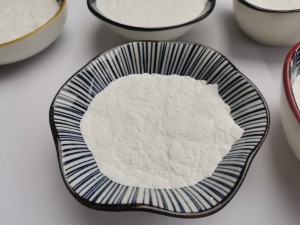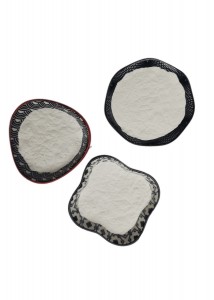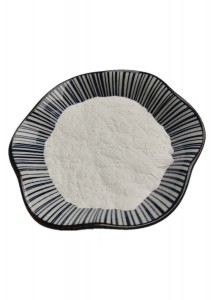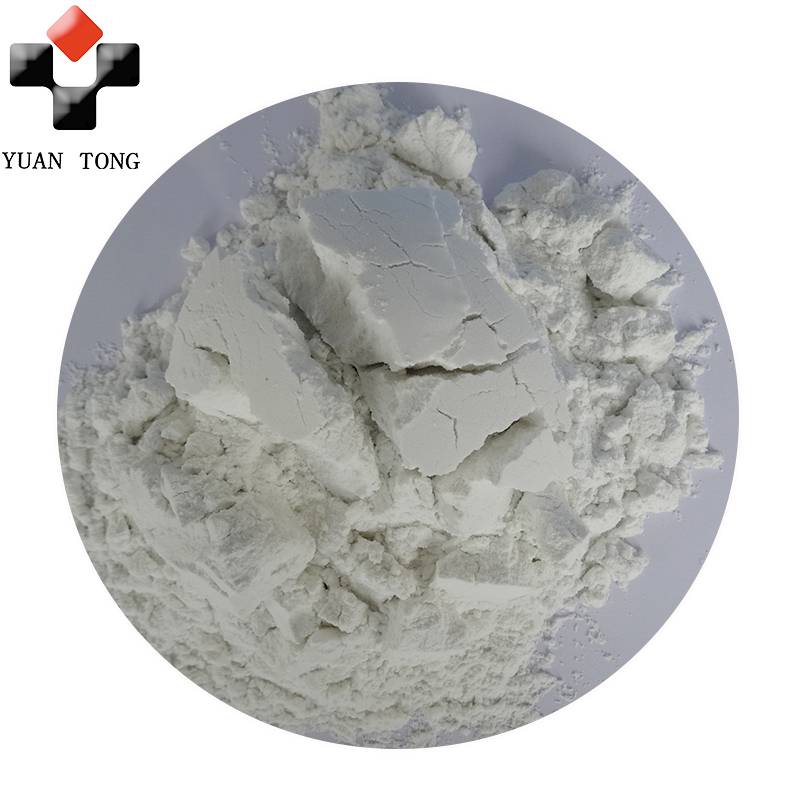-

Competitive Price Filter Aid Celatom Celite Diatomite Medium
Diatomite is a fossil diatomite deposit formed after the death of a single celled plant called diatom and a accumulation period of about 10000 to 20000 years. Diatoms are one of the earliest protozoa on the earth. They live in seawater or lake water. They create 70% of the oxygen on the earth. During the growth process, it continuously absorbs the free silicon in the water to form a solid and porous cell wall. After the end of the diatom life cycle, the cell wall will not decompose and deposit to the underwater bottom. Diatomite is formed through crustal changes.
This diatomite is formed by the deposition of the remains of single celled aquatic chemical Book Plant diatom. The unique performance of this diatom is that it can absorb free silicon in water to form its bones. When its life is over, it will deposit and form diatomite deposit under certain geological conditions. It has some unique properties, such as porosity, low concentration, large specific surface area, relative incompressibility and chemical stability. After changing its particle size distribution and surface properties through processing processes such as crushing, sorting, calcination, air flow classification and impurity removal, it can be applied to a variety of industrial requirements such as coatings and paint additives. -

Manufacturer Price Diatomiceous Earth For Gravity Filter Clay
Diatomite is a fossil diatomite deposit formed after the death of a single celled plant called diatom and a accumulation period of about 10000 to 20000 years. Diatoms are one of the earliest protozoa on the earth. They live in seawater or lake water. They create 70% of the oxygen on the earth. During the growth process, it continuously absorbs the free silicon in the water to form a solid and porous cell wall. After the end of the diatom life cycle, the cell wall will not decompose and deposit to the underwater bottom. Diatomite is formed through crustal changes.
This diatomite is formed by the deposition of the remains of single celled aquatic chemical Book Plant diatom. The unique performance of this diatom is that it can absorb free silicon in water to form its bones. When its life is over, it will deposit and form diatomite deposit under certain geological conditions. It has some unique properties, such as porosity, low concentration, large specific surface area, relative incompressibility and chemical stability. After changing its particle size distribution and surface properties through processing processes such as crushing, sorting, calcination, air flow classification and impurity removal, it can be applied to a variety of industrial requirements such as coatings and paint additives. -

Top Quality Kieselguhr Celite Diatomite Filter Aid
Diatomite is a fossil diatomite deposit formed after the death of a single celled plant called diatom and a accumulation period of about 10000 to 20000 years. Diatoms are one of the earliest protozoa on the earth. They live in seawater or lake water. They create 70% of the oxygen on the earth. During the growth process, it continuously absorbs the free silicon in the water to form a solid and porous cell wall. After the end of the diatom life cycle, the cell wall will not decompose and deposit to the underwater bottom. Diatomite is formed through crustal changes.
This diatomite is formed by the deposition of the remains of single celled aquatic chemical Book Plant diatom. The unique performance of this diatom is that it can absorb free silicon in water to form its bones. When its life is over, it will deposit and form diatomite deposit under certain geological conditions. It has some unique properties, such as porosity, low concentration, large specific surface area, relative incompressibility and chemical stability. After changing its particle size distribution and surface properties through processing processes such as crushing, sorting, calcination, air flow classification and impurity removal, it can be applied to a variety of industrial requirements such as coatings and paint additives. -

diatomite earth filler products price
Diatomite is a fossil diatomite deposit formed after the death of a single celled plant called diatom and a accumulation period of about 10000 to 20000 years. Diatoms are one of the earliest protozoa on the earth. They live in seawater or lake water. They create 70% of the oxygen on the earth. During the growth process, it continuously absorbs the free silicon in the water to form a solid and porous cell wall. After the end of the diatom life cycle, the cell wall will not decompose and deposit to the underwater bottom. Diatomite is formed through crustal changes.
This diatomite is formed by the deposition of the remains of single celled aquatic chemical Book Plant diatom. The unique performance of this diatom is that it can absorb free silicon in water to form its bones. When its life is over, it will deposit and form diatomite deposit under certain geological conditions. It has some unique properties, such as porosity, low concentration, large specific surface area, relative incompressibility and chemical stability. After changing its particle size distribution and surface properties through processing processes such as crushing, sorting, calcination, air flow classification and impurity removal, it can be applied to a variety of industrial requirements such as coatings and paint additives. -

Dadi brand food grade natural diatomaceous diatomite earth celite filter powder and Filler powder
Diatomite is a fossil diatomite deposit formed after the death of a single celled plant called diatom and a accumulation period of about 10000 to 20000 years. Diatoms are one of the earliest protozoa on the earth. They live in seawater or lake water. They create 70% of the oxygen on the earth. During the growth process, it continuously absorbs the free silicon in the water to form a solid and porous cell wall. After the end of the diatom life cycle, the cell wall will not decompose and deposit to the underwater bottom. Diatomite is formed through crustal changes.
This diatomite is formed by the deposition of the remains of single celled aquatic chemical Book Plant diatom. The unique performance of this diatom is that it can absorb free silicon in water to form its bones. When its life is over, it will deposit and form diatomite deposit under certain geological conditions. It has some unique properties, such as porosity, low concentration, large specific surface area, relative incompressibility and chemical stability. After changing its particle size distribution and surface properties through processing processes such as crushing, sorting, calcination, air flow classification and impurity removal, it can be applied to a variety of industrial requirements such as coatings and paint additives. -

Diatomite Kieselguhr Earth For Paper Filler
Diatomite is a fossil diatomite deposit formed after the death of a single celled plant called diatom and a accumulation period of about 10000 to 20000 years. Diatoms are one of the earliest protozoa on the earth. They live in seawater or lake water. They create 70% of the oxygen on the earth. During the growth process, it continuously absorbs the free silicon in the water to form a solid and porous cell wall. After the end of the diatom life cycle, the cell wall will not decompose and deposit to the underwater bottom. Diatomite is formed through crustal changes.
This diatomite is formed by the deposition of the remains of single celled aquatic chemical Book Plant diatom. The unique performance of this diatom is that it can absorb free silicon in water to form its bones. When its life is over, it will deposit and form diatomite deposit under certain geological conditions. It has some unique properties, such as porosity, low concentration, large specific surface area, relative incompressibility and chemical stability. After changing its particle size distribution and surface properties through processing processes such as crushing, sorting, calcination, air flow classification and impurity removal, it can be applied to a variety of industrial requirements such as coatings and paint additives. -

Flux Calcined Diatomaceous Earth Kieselgur Powder
Diatomite is a fossil diatomite deposit formed after the death of a single celled plant called diatom and a accumulation period of about 10000 to 20000 years. Diatoms are one of the earliest protozoa on the earth. They live in seawater or lake water. They create 70% of the oxygen on the earth. During the growth process, it continuously absorbs the free silicon in the water to form a solid and porous cell wall. After the end of the diatom life cycle, the cell wall will not decompose and deposit to the underwater bottom. Diatomite is formed through crustal changes.
This diatomite is formed by the deposition of the remains of single celled aquatic chemical Book Plant diatom. The unique performance of this diatom is that it can absorb free silicon in water to form its bones. When its life is over, it will deposit and form diatomite deposit under certain geological conditions. It has some unique properties, such as porosity, low concentration, large specific surface area, relative incompressibility and chemical stability. After changing its particle size distribution and surface properties through processing processes such as crushing, sorting, calcination, air flow classification and impurity removal, it can be applied to a variety of industrial requirements such as coatings and paint additives. -

diatomaceous earth/diatomite powder casting mold discharging agent hot film coating centrifugal casting
Diatomite is a fossil diatomite deposit formed after the death of a single celled plant called diatom and a accumulation period of about 10000 to 20000 years. Diatoms are one of the earliest protozoa on the earth. They live in seawater or lake water. They create 70% of the oxygen on the earth. During the growth process, it continuously absorbs the free silicon in the water to form a solid and porous cell wall. After the end of the diatom life cycle, the cell wall will not decompose and deposit to the underwater bottom. Diatomite is formed through crustal changes.
This diatomite is formed by the deposition of the remains of single celled aquatic chemical Book Plant diatom. The unique performance of this diatom is that it can absorb free silicon in water to form its bones. When its life is over, it will deposit and form diatomite deposit under certain geological conditions. It has some unique properties, such as porosity, low concentration, large specific surface area, relative incompressibility and chemical stability. After changing its particle size distribution and surface properties through processing processes such as crushing, sorting, calcination, air flow classification and impurity removal, it can be applied to a variety of industrial requirements such as coatings and paint additives. -

Top Quality Food Grade Kieselguhr Diatomite Celite 545
Diatomite is a fossil diatomite deposit formed after the death of a single celled plant called diatom and a accumulation period of about 10000 to 20000 years. Diatoms are one of the earliest protozoa on the earth. They live in seawater or lake water. They create 70% of the oxygen on the earth. During the growth process, it continuously absorbs the free silicon in the water to form a solid and porous cell wall. After the end of the diatom life cycle, the cell wall will not decompose and deposit to the underwater bottom. Diatomite is formed through crustal changes.
This diatomite is formed by the deposition of the remains of single celled aquatic chemical Book Plant diatom. The unique performance of this diatom is that it can absorb free silicon in water to form its bones. When its life is over, it will deposit and form diatomite deposit under certain geological conditions. It has some unique properties, such as porosity, low concentration, large specific surface area, relative incompressibility and chemical stability. After changing its particle size distribution and surface properties through processing processes such as crushing, sorting, calcination, air flow classification and impurity removal, it can be applied to a variety of industrial requirements such as coatings and paint additives. -

Celite 545 Wastewater Treatment Diatomite Filter Aid
1. Application range of industrial fillers of diatomaceous earth Pesticide industry: wettable powder, herbicide for dry land, herbicide for paddy field and various biological pesticides.
2. High-efficiency fertilizer: Promote the growth of crops, improve soil, etc.
3. Rubber industry: fillers in various rubber products such as vehicle tires, rubber tubes, triangle belts, rubber rolling, conveyor belts, car mats, etc.
4. Building insulation industry: roof insulation, thermal insulation bricks, calcium silicate thermal insulation materials, porous briquettes, sound insulation and fire protection decorative panels, etc. thermal insulation, heat insulation, sound insulation building materials, wall sound insulation decorative panels, floor tiles, ceramic products, etc.
5. Used as an additive in cement
6. Plastics; Paper; Paint Coatings; Feed/Fodder; Polishing and Friction Industry; Leather and artificial leather industry; Sewage treatment industry etc. -

Food Grade Celatom Water Treatment Diatomaceous Earth
1. Application range of industrial fillers of diatomaceous earth Pesticide industry: wettable powder, herbicide for dry land, herbicide for paddy field and various biological pesticides.
2. High-efficiency fertilizer: Promote the growth of crops, improve soil, etc.
3. Rubber industry: fillers in various rubber products such as vehicle tires, rubber tubes, triangle belts, rubber rolling, conveyor belts, car mats, etc.
4. Building insulation industry: roof insulation, thermal insulation bricks, calcium silicate thermal insulation materials, porous briquettes, sound insulation and fire protection decorative panels, etc. thermal insulation, heat insulation, sound insulation building materials, wall sound insulation decorative panels, floor tiles, ceramic products, etc.
5. Used as an additive in cement
6. Plastics; Paper; Paint Coatings; Feed/Fodder; Polishing and Friction Industry; Leather and artificial leather industry; Sewage treatment industry etc. -

Industrial Grade Diatomite For Pool Filters
Overview Quick Details Place of Origin: Jilin, China Brand Name: Dadi Model Number: TL-301#;TL-302C#;F30#;TL-601# Color: Light pink/White Use: Filler MOQ: 1 Metric Ton Water Maximum (%): 0.5/8.0 ...

